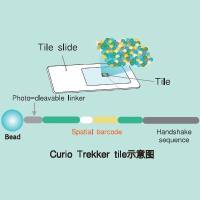Proteoglycan: Site Mapping and Site-Directed Mutagenesis
互联网
699
Identification of proteoglycan chain modification sites cannot yet be reliably predicted from primary amino acid sequence data. A number of studies have shown that serine is the predominant amino acid that is modified and it is frequently flanked by a C-terminal glycine and proximal N-terminal acidic amino acids; however, not all simple Ser-Gly motifs constitute a modification site. Here we present a rapid method for cloning small, defined segments of putative proteoglycan attachment sites and expressing them as a minireporter protein in an insect tissue culture system that is expandable to high throughput analysis. Reporter proteins with attached proteoglycans can be readily discerned from their unmodified form, by a simple gel-shift assay and Western blot detection for an epitope tag engineered into the reporter. Unmodified proteins are generated as a reference standard by treating cells with dsRNA to knock down the endogenous polypeptide xylose transferase, which is responsible for initiating proteoglycan site attachment. Examination of proteoglycan attachment by different metazoan organisms can be studied in the same cell line by cotransfecting a polypeptide xylose transferase expression plasmid and reporter construct from human, mouse, frog, or worm, for example. Reporter proteins engineer with point mutations can be rapidly generated with this system to pinpoint the exact residue that is glycosylated, to verify the mapping data.






